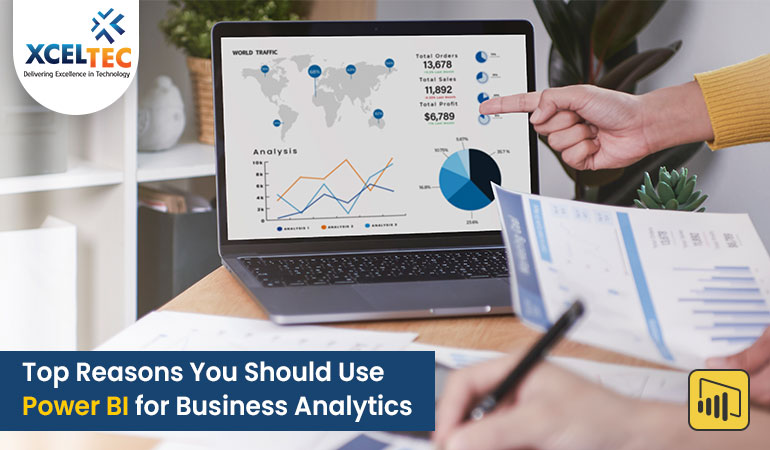Power BI is a self-service tool that combines data preparation and discovery, interactive dashboards, and rich visualizations into a single solution. Its self-service capabilities make it an intuitive tool for dealing with data and converting it into insights. Our top reasons for using Power BI for data analytics and self-service business analytics are listed below.
1) It’s easy to connect your data together:
Power BI makes it simple to bring all of your data into one place for easier access, organization, and visibility in your reporting efforts.
Out-of-the-box, the tool supports up to 70 connectors, allowing businesses to load data from a variety of popular cloud-based sources, including Azure (Azure Data Warehouse), DropBox, Google Analytics, OneDrive, and SalesForce, as well as Excel spreadsheets, CSV files, and data stored on-premises, such as SQL Database.
2) It’s both powerful and efficient:
The Power Pivot data modeling engine in Power BI (which is shared with Excel) is a highly performant columnar database that compresses databases and ensures they load fully into memory for the greatest possible performance.
It’s fairly uncommon for your Power BI Workbook (.PBIX file) to be much smaller than your original data sets; in fact, 1GB databases are typically compressed down to roughly 50 – 200MB.
While Excel slows down when working with huge models, Power BI is designed to handle tables with more than 100 million records without breaking a sweat.
3) It features open-source visuals:
Power BI includes a variety of pre-built basic data graphics for use in interactive reports, including bar, column, line, map, matrix, pie charts, scatter, table, and waterfall – each with its own set of customization options for improved presentation and functionality.
However, you can add a personal touch to your data by using free custom graphics produced by developers (or in-house) and shared with the Power BI community to display your data in a way that best tells your data narrative.
4) Enable more advanced analytics with familiar Excel features:
Advanced Excel users who are familiar with the Data Analysis Expressions (DAX) formula language can leverage Power BI’s familiar Power Pivot tools like clustering, forecasting, grouping, and quick measures to delve deeper into their data and uncover patterns more quickly.
Excel users will be comfortable with the inbuilt self-service Power Query tool, making it simple to ingest, transform, integrate, and augment business data in Power BI right away.
Another benefit is that Power BI effortlessly connects with Excel, eliminating the need to export files; simply select ‘Analyze in Excel’ and Power BI will display an interface that is nearly comparable to Excel. If you’ve had trouble getting your business users to adopt a new product, Power BI’s native Excel interface is a must-have.
Tech Stack:
- Power Pivot (Data Modeling Technique)
- Data Analysis Expression (DAX) Language
Conclusion
It’s easy to see why businesses are flocking to Power BI for improved insights, dynamic dashboards, and comprehensive reporting. Now is the time to take advantage of the numerous tools and services available to help you prepare for a successful Power BI development implementation and boost data insights across your organization.
Get in touch with us for more!
Contact us on:- +91 987 979 9459 | +1-980 428 9909
Email us at:- sales@xceltec.com
Visit our website: https://www.xceltec.com/

